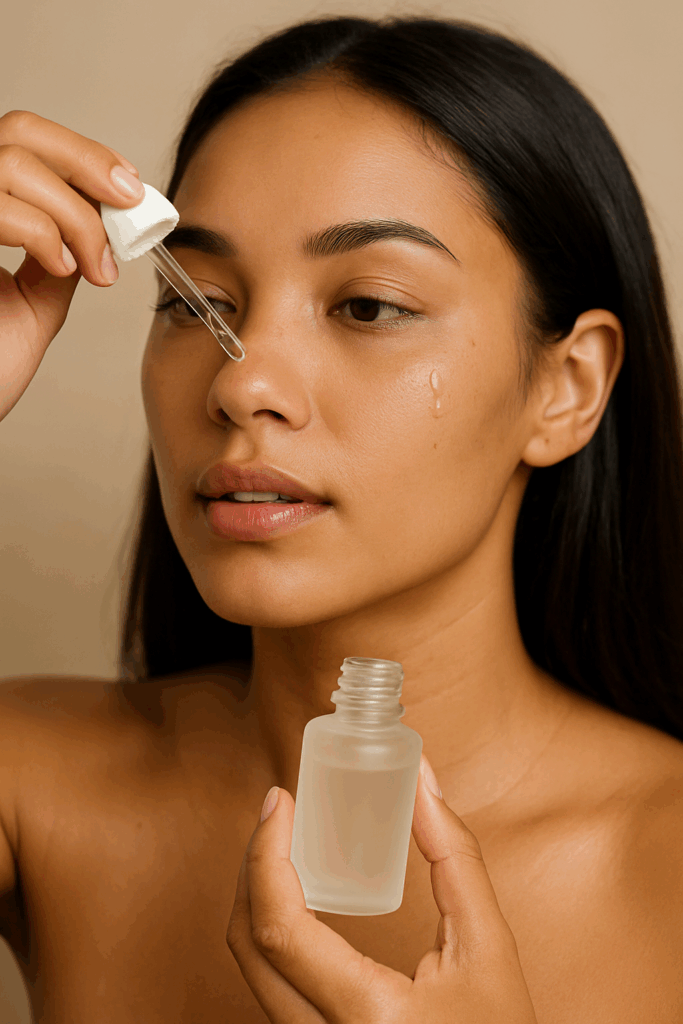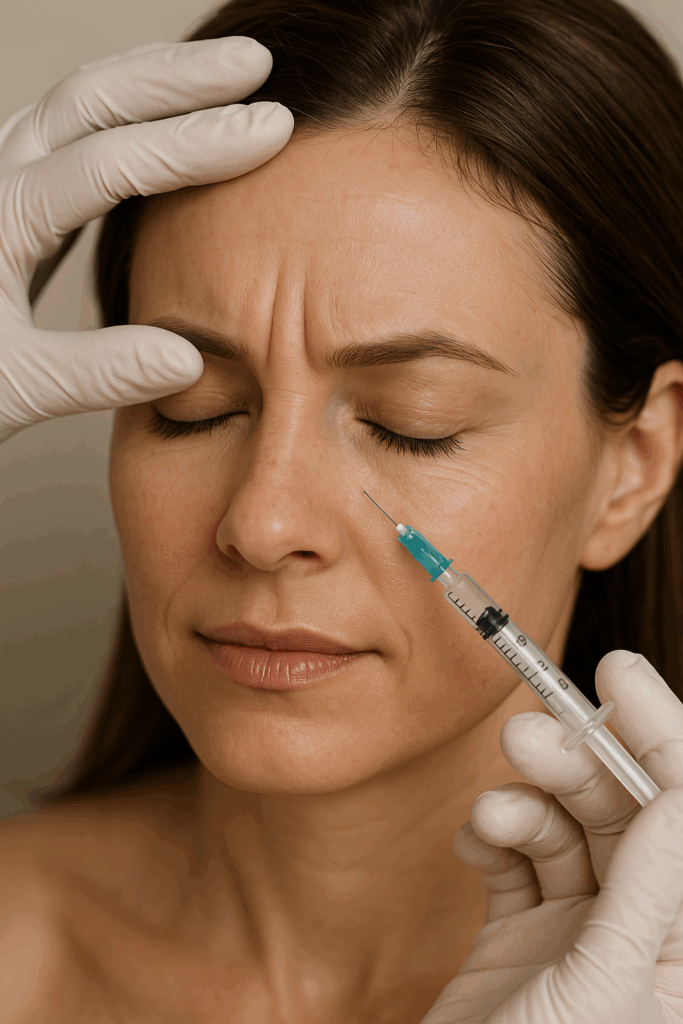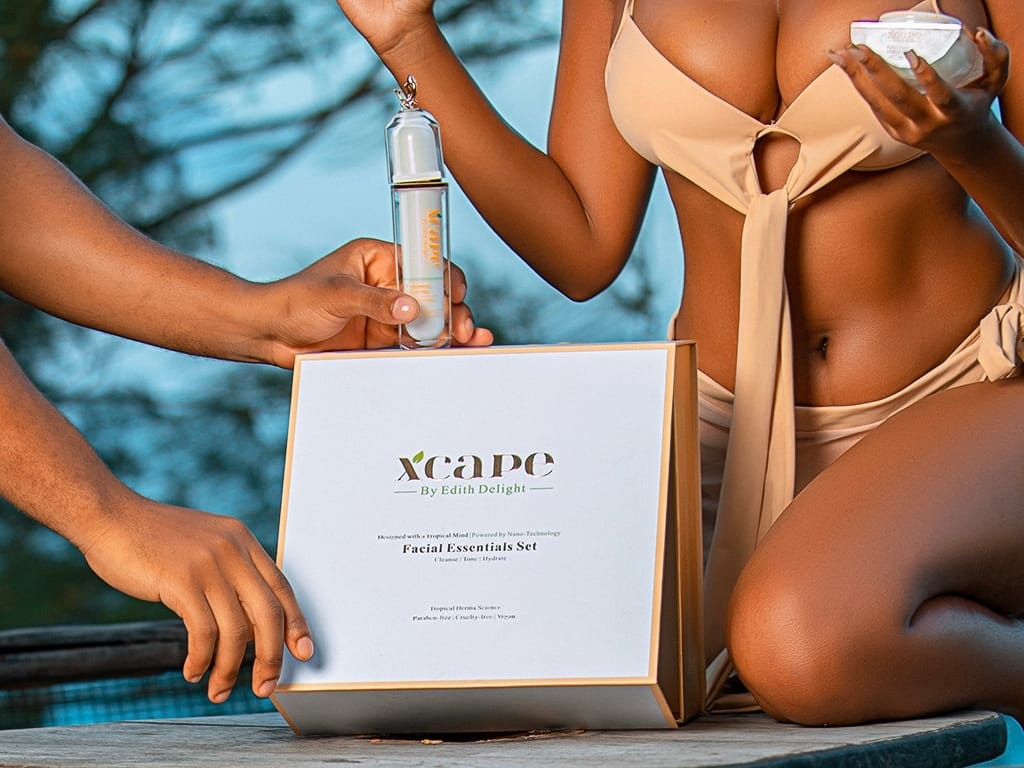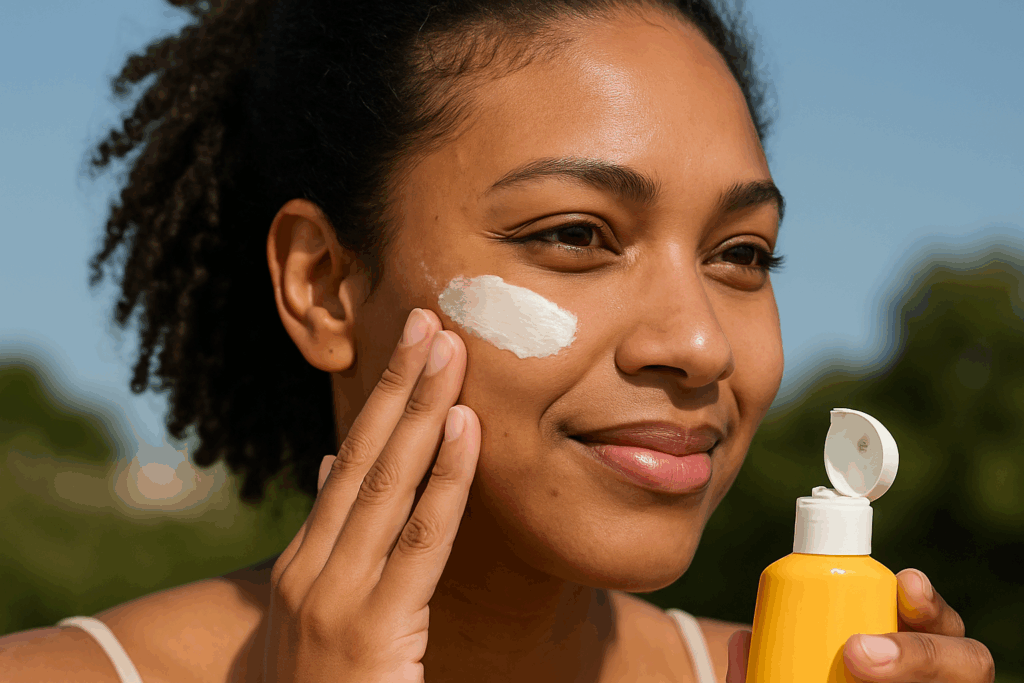If you follow skincare trends, you’ve probably seen a new buzzword popping up everywhere: NAD for skin. From fancy serums to dermatologist-led discussions, NAD (short for nicotinamide adenine dinucleotide) is making waves as the next big thing in anti-aging skincare. But does this “miracle molecule” live up to the hype, or is it just another trendy skincare ingredient with exaggerated marketing claims? Let’s break down what the science says, and what it doesn’t, about NAD for your skin.
What Is NAD, and Why Does Your Skin Need It?
Nicotinamide adenine dinucleotide (NAD⁺) is a molecule found in every living cell, including your skin. Think of NAD⁺ as a battery for your skin cells. It fuels vital reactions, helps repair DNA after sun exposure, and keeps cells youthful and energized. The catch? Like so many other biological processes, NAD⁺ levels naturally go down as we age. Similar to the way our cells cannot produce as much collagen and elastin as we age. This decline may be linked to duller skin, slower repair, and those pesky signs of aging we all want to fight.

NAD’s Journey from the Lab to Your Bathroom Shelf
NAD⁺ started as a molecular superstar in aging research labs. Relatively quickly, scientists realized its benefits had potential in skincare. After that, it found its way into skincare products, especially those promising anti-aging results.
Traditionally, vitamin B3 derivatives, like niacinamide (nicotinamide) and niacin (nicotinic acid), have been the most popular in skincare. They are skincare superstars due to their ability to help the body produce more NAD⁺. More recently, advanced NAD⁺ “boosters” like NMN (nicotinamide mononucleotide) and NR (nicotinamide riboside) are gaining popularity. They are being added to both dietary supplements and experimental topical skincare products. All to replenish the skin’s NAD⁺ reservoir.
The Science Behind NAD for Skin: What Does NAD⁺ Actually Do for Skin?
When we talk about healthy skin, there are a couple of ways NAD⁺ helps your skin:
Fixing Damaged Skin
Imagine your skin is like a tiny house. Sometimes, the sun or just getting older can cause little cracks or damage to the house’s blueprint, your DNA. NAD⁺ helps special worker enzymes called PARPs fix this DNA damage. It is almost like they’re repairing the blueprint so the house stays strong.
Keeping Skin Cells Young
NAD⁺ is also super important for other special proteins called sirtuins. You can think of sirtuins as “longevity proteins.” They help keep your skin cells healthy and strong for a long time. This is like doing routine maintenance to keep the house from getting old and worn out too quickly.
Powering Up Skin Cells
Just like a car needs gas to run, your skin cells need energy. This energy is made in tiny parts of your cells called mitochondria, which are like the powerhouses of your skin cells. NAD⁺ is the fuel that helps these powerhouses make energy (ATP), so your skin cells can do all their important jobs. This is one of the biggest benefits of NAD for skin, because it helps keep your cells energized and behaving in a youthful way.
Making Skin Stronger
Your skin barrier does a great job of keeping good things in (like water) and bad things out. This barrier is made stronger when your skin cells make more lipids, like ceramides. Guess what helps your skin cells make more of these lipids? That’s right, NAD⁺! So, with enough NAD⁺, your skin’s shield becomes stronger, healthier, and better at keeping your skin moist.
When NAD⁺ levels drop, skin cells repair more slowly, accumulate damage, and the skin barrier weakens—all hallmarks of aging.
Can You Really Boost NAD in Skin with Topical Products?
Niacinamide is already a very popular active ingredient in skincare. Multiple clinical trials show it can help improve wrinkles, uneven skin tone, elasticity, and barrier function. Niacinamide works because it’s a small molecule that penetrates the skin, raising NAD⁺ levels inside skin cells and fueling repair.
NAD⁺ itself is a larger, more polar molecule. This means it does not absorb as well through the skin barrier. It takes special formulation strategies to make it penetrate the skin barrier, like encapsulation or stabilizing carriers. Standard NAD⁺ serums without advanced delivery technology likely do very little, because the active NAD⁺ struggles to reach where it’s needed most.

NMN and NR are promising NAD⁺ precursors that theoretically penetrate better than NAD⁺, but they still face challenges getting through intact skin without a special delivery system (like nanoparticles). Early-stage research is ongoing, but robust human trial data for skin benefits are still limited.
What Does the Research Say Specifically About NAD for Skin And Its Derivatives?
- Topical NAD⁺ ointment: In a clinical trial, 1% NAD⁺ ointment performed as well as a standard prescription drug in reducing psoriatic plaques, with fewer side effects. However, the ointment had to be refrigerated to remain stable, highlighting practical challenges for everyday skincare use.
- Niacin derivative creams: A myristyl nicotinate cream raised skin NAD by 25%, thickened the skin, improved its barrier, and created a smoother texture.
- Niacinamide: The best evidence comes from multiple randomized trials using 5% niacinamide creams. These consistently reduce fine lines, wrinkles, uneven pigmentation, and redness, while improving elasticity and boosting ceramide production to help the skin stay hydrated and protected.
NAD for Skin vs. the Marketing Claims
You’ll see plenty of high-end creams and serums touting NAD⁺ as “the key to youthful skin.” Here’s what the evidence actually says:
- Topical NAD⁺ and derivatives: Early clinical trials show improved barrier function and reduced inflammation. Especially in skin conditions like psoriasis, but dramatic anti-aging effects remain unproven for most products on the market.
- Niacinamide: With multiple peer-reviewed human trials supporting its benefits, niacinamide is the gold-standard, science-backed NAD⁺-boosting skincare ingredient.
- NMN and NR: These next-gen NAD⁺ precursors have lots of buzz, but direct evidence for topical anti-aging benefits in humans is still pending.
Is NAD Safe to Use on Skin?
Topical NAD⁺, niacinamide, and related actives all have an excellent safety record. NAD⁺ ointment did not cause irritation in clinical studies. Niacinamide is widely used and typically well tolerated by most people. Occasional mild stinging or redness can happen, but serious side effects are rare. For injectable NAD⁺ (such as IV infusions), mild temporary flushing or nausea may occur, especially if the dose is delivered too quickly. However, no long-term adverse effects have been reported.

How Does NAD Compare to Other Popular Skincare Actives?
- Collagen: Topical collagen acts only as a moisturizer. It does not stimulate new collagen production. Due to its large molecular size it cannot penetrate the skin barrier, which is critical to trigger cells to produce more collagen.
- Resveratrol: This antioxidant activates sirtuins (which require NAD⁺) and protects skin from oxidative stress, indirectly supporting DNA repair and NAD⁺ function.
- NAD⁺/Precursors: NAD⁺-boosters (especially niacinamide) improve skin from within, enhancing barrier strength, repair, and visible youthfulness at the cellular level—proven by multiple human trials.
Should You Try NAD for Your Skin? Practical Recommendations
If you’re thinking about adding NAD⁺ to your skincare lineup, here’s what science currently supports:
- Choose niacinamide: For now, it’s the best-evidenced NAD⁺-boosting ingredient. Use 2–5% niacinamide products to fade pigmentation, boost hydration, strengthen your barrier, and soften wrinkles.
- Be cautious with “NAD⁺” labeled serums: Unless a product utilizes advanced delivery technology and demonstrates stability, regular NAD⁺ serums may not yield noticeable results.
- Watch this space: NMN and NR could become more effective as delivery tech improves, but niacinamide is the proven choice for now.

The Bottom Line
NAD for skin is a cutting-edge area of skincare research with real promise. Boosting NAD⁺, especially with niacinamide, can deliver true improvements in barrier health, hydration, and visible aging. While direct NAD⁺ and next-gen precursors are exciting, the strongest clinical results are still with niacinamide. For now, science says: your best bet for NAD⁺-driven skin benefits is sticking with tried-and-true niacinamide, while watching for new innovation.
References
The Role of NAD+ in regenerative medicine. (2022). Frontiers in Cell and Developmental Biology, 10, Article 9512238. https://pmc.ncbi.nlm.nih.gov/articles/PMC9512238/
In search for new antipsoriatic agents: NAD topical composition. (2006). Acta Poloniae Pharmaceutica, 63(5), 405–409. https://pubmed.ncbi.nlm.nih.gov/17035720/
Tanno, O., Ota, Y., Kitamura, N., Katsube, T., & Inoue, S. (2007). A topical lipophilic niacin derivative increases NAD, epidermal differentiation and barrier function in photodamaged skin. Experimental Dermatology, 16(8), 629–635. https://pubmed.ncbi.nlm.nih.gov/17518989/
Green, B. A., Yu, R. J., & Van Scott, E. J. (2014). Evaluation of efficacy and tolerance of a nighttime topical antioxidant containing resveratrol, baicalin, and vitamin E for treatment of mild to moderately photodamaged skin. Journal of Drugs in Dermatology, 13(12), 1467–1472. https://jddonline.com/articles/evaluation-of-efficacy-and-tolerance-of-a-nighttime-topical-antioxidant-containing-resveratrolbaica-S1545961614P1467X/
Myllyharju, J. (2022). Collagen supplements for aging and wrinkles: A paradigm shift in the fields of dermatology and cosmetics. Frontiers in Aging, 3, Article 8824545. https://pmc.ncbi.nlm.nih.gov/articles/PMC8824545/
AZ IV Medics. (n.d.). NAD IV therapy side effects, benefits and potential risk. https://www.azivmedics.com/side-effects-of-nad-therapy
Gomes, A. P., & Sinclair, D. A. (2020). Age-related NAD+ decline. Cell Metabolism, 31(3), 382–395. https://pubmed.ncbi.nlm.nih.gov/32097708/
Yaku, K., Okabe, K., & Nakagawa, T. (2020). Clinical evidence for targeting NAD therapeutically. Nutrients, 12(11), 3091. https://pmc.ncbi.nlm.nih.gov/articles/PMC7558103/
Recent research into nicotinamide mononucleotide and ageing. (2022). Nature Outlook: Ageing Research. https://www.nature.com/articles/d42473-022-00002-7
Eden. (2023). Topical NAD+: What the research says. https://www.tryeden.com/post/topical-nad-what-the-research-says?srsltid=AfmBOooOM3DHI114iLye-S3sH5NAZL497TrlTIYl1GNyDMlWibIA2hK
Bissett, D. L., Oblong, J. E., & Berge, C. A. (2005). Niacinamide: A B vitamin that improves aging facial skin appearance. Dermatologic Surgery, 31(7), 860–865. https://pubmed.ncbi.nlm.nih.gov/16029679/
Zhang, R., Ma, L., Li, G., et al. (2022). Nicotinamide mononucleotide reduces melanin production in aged skin. Life Sciences, 303, Article 120683. https://www.sciencedirect.com/science/article/abs/pii/S0923181122001220
Cosmetics Design. (2023, March 13). NAD+: Bioactive fights skin aging at the cellular level. https://www.cosmeticsdesign.com/Article/2023/03/13/nad-bioactive-fights-skin-aging-at-the-cellular-level/
Jhun, H. J., Lee, S. J., Ko, J., Kim, J., & Park, S. H. (2024). Randomized, placebo-controlled, pilot clinical study evaluating … medRxiv. https://www.medrxiv.org/content/10.1101/2024.06.06.24308565v1.full-text
Wang, Y., Li, X., Wang, Q., et al. (2024). The safety and antiaging effects of nicotinamide mononucleotide in humans: A randomized, double-blind, placebo-controlled, dose-escalation clinical trial. Frontiers in Aging Neuroscience, 16, Article 10721522. https://pmc.ncbi.nlm.nih.gov/articles/PMC10721522/







